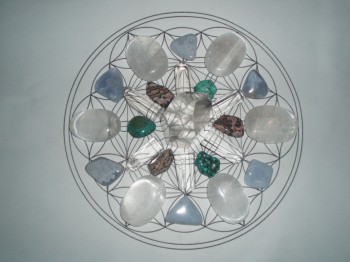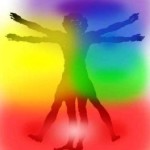Popular Alternative Therapies
Published on 24 June, 2012 | Latest News
Crystal Therapy

Crystals have been used for healing since ancient times by many different cultures It is a holistic therapy, which means that the focus is on the individual as a whole, rather than on physical symptoms alone. The aim of this therapy is to restore wholeness, balance and health on levels of emotions, mind, spirit as well as the physical body. This is why crystal healing is considered complementary to allopathic medicine and not an alternative.
Crystal Healing often involves some form of change in a client’s overall way of being. It may be through a relief of stress and tensions, through revitalization, relaxation or establishing a greater amount of peace and harmony. Crystal Healing is also helpful in complementing most forms of allopathic medical practice. Apart from promoting ‘wellness’ and helping to prevent physical illness, it can be of use in the following circumstances:
Both acute and chronic conditions
Stress related conditions
States of anxiety
Pre-operative care
Post-operative healing
Care of the terminally ill
Activate and support the natural self-healing processes within the individual client
support the recovery of existing symptoms.
How does Crystal Healing work?
Crystal Healers are not permitted or trained to diagnose physical ailments. They do however assess the condition of the bio-magnetic field of a client before choosing appropriate crystals to help bring it back into balance and harmony. Since the state of the bio-magnetic field relates to and influences the state of the physical body, this process will help activate, support and often accelerate the natural self-healing processes. It may be of interest to note that this field, also known as the electro magnetic field or aura, has been discussed and contemplated within the realm of healing and philosophy for thousands of years. It is only fairly recently that science has proven that it must exist around every physical body and organism, thereby helping, amongst other, to validate crystal healing.
What to expect during a healing session from a client’s point of view
You will be asked to fill in a form with your details, the name of your GP or specialist and have a brief chat concerning your reasons for seeking healing. The healer will then ask you to either sit on a chair or lay down (fully clothed) on a massage couch, in which case you will be asked to remove your shoes. He/she will then make sure that you are relaxed and comfortable and may place a few small crystals on or around you and channel healing. You may experience a feeling of deep relaxation, sometimes a little warmth or coolness during the session. Most treatments take approximately one hour. In a hospital, the client would remain in bed and will not need to fill in a form.
Crystal Healing Regulations
The governing body that has set national minimum standards for crystal healing, is the British Crystal Healers (BCH), the founders of which are the two main crystal healing umbrella organizations in the UK, The Crystal & Healing Federation and the Affiliation of Crystal Healing Organisations. All therapists who have trained with BCH member schools are qualified to a high standard, insured and must adhere to a strict code of conduct. They also attend Continual Professional Development studies each year.
Aromatherapy

Aromatherapy is the use of volatile plant oils for preventative care, healing and general physical well-being. Although the term aromatherapy was not used until the 20th Century, the foundations of Aromatherapy date back thousands of years and can be traced back through to ancient Roman, Greek, Egyptian and Chinese cultures.
Essential oils can be used in different ways, including massage, bathing and inhalation. When essential oils are inhaled, olfactory receptor cells are stimulated and the impulse is transmitted to the emotional centre of the brain, or “limbic system”. The limbic system is connected to areas of the brain linked to memory, breathing, and blood circulation, as well as the endocrine glands that regulate hormone levels in the body. The properties of the oil, the fragrance and its effects, determine stimulation of these systems. When used in massage, essential oils are not only inhaled, but absorbed through the skin as well. They penetrate the tissues and find their way into the bloodstream where they are transported to the organs and systems of the body. Different oils are thought to act on the body in different ways, having a relaxing, energizing, calming or uplifting effect.
Popular because of its non-invasive nature, aromatherapy is used for a wide range of health problems such as anxiety, stress, insomnia, anxiety and stress related conditions. Many people find it useful in treating arthritic and rheumatoid pain, headaches, and pre-menstrual tension. It is sometimes available in maternity services and is widely used in palliative and cancer care in hospitals and hospices. Some people also use aromatherapy just for its relaxation effects.
Therapists need to be made aware of any health problems the patient may have, particularly cardiac, respiratory, neurological or dermatological conditions, as some essential oils have to be avoided for people with these conditions. There is also the possibility of some essential oils interacting with prescribed medications, so patients should check with their GP as well as informing their therapist of any medication they are taking. Pregnant women are advised to avoid essential oils in the first 16 weeks of pregnancy and some should not be used at all during pregnancy.
Source: From the NHS Direct website of complimentary and alternative Practitioners
To learn more about crystals, aromatherapy and other accredited therapy courses then visit Luna Holistics which specialize in offering professional training courses.


